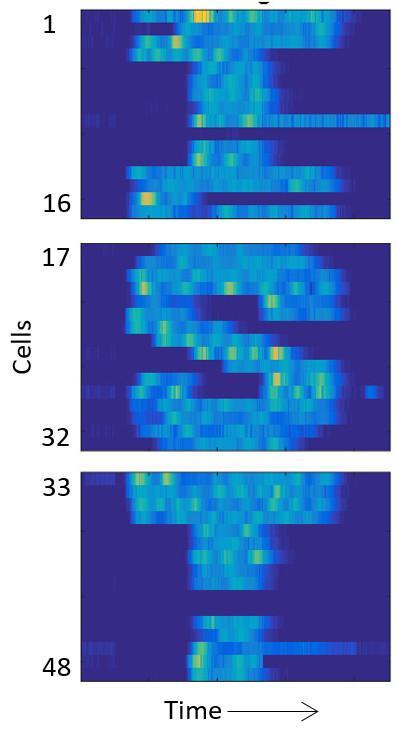Bacteria trained in bio-tech hybrid
 Scientists have managed to control the behaviour of individual bacteria by connecting them to a computer.
Scientists have managed to control the behaviour of individual bacteria by connecting them to a computer.
An interdisciplinary research team including experimental biologists and mathematicians have built a genetic circuit that is partly living and partly digital.
They were able to make gene expression in bacteria oscillate, and control the patterns of oscillation by adjusting digital communication between individual bacteria.
The team says its bio-digital hybrid technology could make it possible to “debug” complex biological systems in the same way complex computer codes are debugged: by testing each part individually while simulating its surroundings in a form of virtual reality.
When synthetic biologists engineer a microorganism for a certain task (for example, programming bacteria to produce a cancer drug or an antibiotic as part of its metabolic cycle), they usually have to make a significant number of changes to the original organism.
Each of these changes can interfere with the effects of other changes, making it a hugely complicated process.
“Even if you understand what the different parts do, you don't know what happens when you put them together,” explains lead researcher, experimental biologist Remy Chait from the Institute of Science and Technology Austria (IST Austria).
“There is feedback between them that makes the behaviour of the full circuit unpredictable.”
The team sought a solution to this problem from the world of software development, called unit and integration testing.
In this approach, each component is tested individually and its interaction with the surroundings is studied.
The best way to do this is to simulate the surroundings in a virtual space and to let the component interact with this virtual world.
It is this method that the researchers now propose to apply also to biological systems.
“Biological systems are complex and we would benefit if we could debug them like a computer code,” Dr Chait explains.
“In unit and integration testing you simulate the environment and plug each of the components in separately to verify that they function as intended. Then you combine them in pairs and start all over.
“In this way you will see at which point feedback and interference start to disturb the system, and adjust it appropriately.”
Using this method, the virtual part could be steadily reduced until the system is fully biological and has the desired function.
The researchers demonstrated the feasibility of bio-digital hybrids with a bio-digital oscillator.
They modified E.coli cells produce a protein that fluoresces blue-violet, with the coloured light forming the interface with the digital side.
Every six minutes, a computer measures how much light the cell produces, and accumulates a virtual signal molecule in proportion to it.
When the signal exceeds a certain threshold, production of the fluorescent protein by the cell is switched off.
This is done by a projector which projects red or green light as ‘off’ or ‘on’ signal onto the light-sensitive cells and thereby links the digital component back to the living parts of the circuit.
“The cells are interacting with the simulated environment. What they do influences what the computer does and what the computer does influences the reaction of the cells,” Dr Chait said.
In tests of the hybrid circuits, the population of cells glowed in blue violet - and the glow oscillated, albeit with variations between the individual bacteria.
The researchers wanted the bacteria to oscillate in synchrony, so they altered the digital component and set up a virtual communication network between the bacteria.
In this setup, some of the virtual signal was distributed between neighbours and the group of bacteria displayed different types of collective oscillation.
In another demonstration, the researchers created feedback control of individual cells to guide them along pre-specified trajectories of fluorescent gene expression.
In this way, they could make a group of cells trace pictures or letters over time (see illustration).







 Print
Print